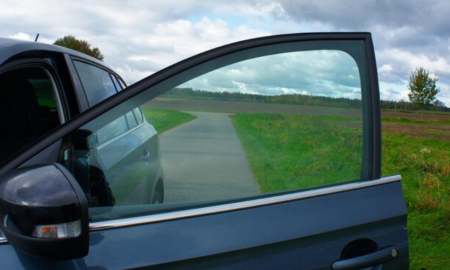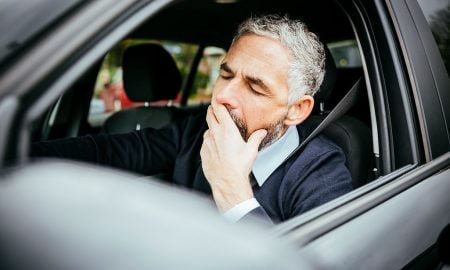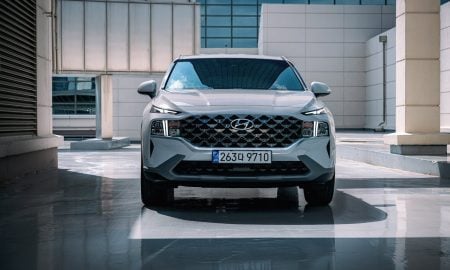
How to Change Engine Oil at Home in 10 Simple Steps

Maintaining your car’s engine is essential, but taking it to the shop for routine oil changes can be inconvenient and costly. Long waits, expensive service fees, and unnecessary upsells frustrate many drivers. The good news? You can save time and money by learning how to change engine oil at home. This comprehensive guide will explore simple steps to change engine oil and keep your vehicle running smoothly without breaking the bank.
Step 1: Raise the Vehicle
Start by safely raising your car to access the oil pan’s drain plug. Drive the vehicle onto ramps or use a jack and secure it with jack stands. Double-check the stability to prevent accidents. Working under an unstable vehicle is dangerous, so take this step seriously to avoid injuries.

Andrea Piacquadio | Pexels | To change your engine oil, raise your car safely to access the oil pan’s drain plug.
Step 2: Position the Catch Pan and Remove the Drain Plug
Place a catch pan under the oil pan to collect the old oil. Ensure the pan is large enough to hold the full volume. Use a socket wrench to loosen the drain plug, then remove it carefully by hand. Be cautious, as the oil may still be hot and could burn your skin.
Step 3: Let the Oil Drain and Inspect the Vehicle
Allow the old oil to drain fully into the catch pan. This process usually takes a few minutes. While waiting, inspect the area for signs of leaks, damage, or wear on visible components. Identifying issues early can save on repairs later.
Step 4: Reinstall the Drain Plug and Torque It Properly
Clean the drain plug and oil pan threads before reinstalling. Check the condition of the plug threads for damage and replace the plug if needed. Tighten it with a socket wrench to the torque specification provided in your vehicle’s owner’s manual. This ensures a secure seal without over-tightening.
Step 5: Remove the Old Oil Filter
Locate the oil filter, which is often accessible by hand or with an oil filter wrench. Turn the filter counterclockwise to remove it. Be prepared for some oil to spill from the filter as it’s removed. Handle it carefully to minimize messes and avoid dropping it.
Step 6: Clean the Mounting Surface and Inspect the O-Ring
Clean the mounting surface after removing the oil filter to remove any residue. Check that the old O-ring isn’t stuck to the engine’s mounting plate. A leftover O-ring can cause leaks when the new filter is installed, so this step is essential.
Step 7: Prepare the New Filter and Install It
Lubricate the O-ring on the new oil filter with fresh oil to ensure a smooth fit. Screw the filter onto the mounting plate by hand until it’s snug. Tighten it an additional three-quarters to one full turn to secure it. Follow the filter’s specific instructions for the best results.

Brian Silvestro | MSN | To ensure a smooth fit, lubricate the O-ring on the new oil filter with fresh oil.
Step 8: Add New Oil to the Engine
Remove the oil fill cap on the top of the engine and place a funnel in the opening. Pour the recommended amount and type of oil specified in your owner’s manual into the funnel. Using the correct viscosity ensures optimal engine performance and longevity.
Step 9: Replace the Oil Fill Cap and Start the Engine
Securely replace the oil fill cap and start the engine. Let it idle for about 30 seconds while observing the drain plug and oil filter for leaks. If you spot any oil leaks, stop the engine and address the issue immediately to prevent further problems.
Step 10: Check the Dipstick Level After Lowering the Vehicle
Once the engine is off, allow the oil to settle for about 30 seconds. Lower the car from the jack or ramps. Remove the dipstick, wipe it clean, and reinsert it fully. Pull it out again to check the oil level. Add more oil as necessary to match the level indicated in the manual.
More inAdvice
-
`
How to Safely Drive Away from Wildfires – Essential Tips
Wildfires are unpredictable and dangerous, often spreading rapidly with little warning. A video from the Los Angeles wildfires showed abandoned cars...
February 1, 2025 -
`
Can Your Car Keep You Safe During an Emergency?
Natural disasters such as wildfires, hurricanes, and floods can occur unexpectedly, leaving little time to prepare. In such situations, your car...
January 25, 2025 -
`
Tesla Reveals 2025 Model Y Juniper – Here’s What’s New!
Tesla has revealed the 2025 Model Y Juniper, a refreshed version of its best-selling electric SUV. This update enhances design, comfort,...
January 25, 2025 -
`
How to Check Transmission Fluid for Optimal Car Performance
Maintaining your vehicle’s transmission is just as essential as other routine car maintenance tasks like oil changes or tire rotations. Knowing...
January 18, 2025 -
`
Sutton Foster and Hugh Jackman Spark Romance on L.A. Date Night
Hollywood is abuzz with the latest photographs of Hugh Jackman and Sutton Foster, who appear to be confirming their romance during...
January 16, 2025 -
`
How to Fix Car Window Off-Track and Align It Properly
When your car window gets stuck or misaligned, it’s often due to an off-track issue. Learning how to fix car window...
January 10, 2025 -
`
How to Drive a Stick Shift: A Quick Guide for Manual Beginners
Driving a stick shift requires coordinating the clutch, brake, and accelerator to control a car with a manual transmission. Manual cars...
January 3, 2025 -
`
Why Drowsy Driving Is Just as Dangerous as Drunk Driving
Drowsy driving poses a serious risk to road safety, yet many underestimate its dangers compared to drunk driving. The National Sleep...
December 27, 2024 -
`
Where Is Hyundai Made? A Look Inside Global Manufacturing Hubs
Hyundai vehicles dominate roads worldwide, offering reliability and innovation. Yet, only some people know where these cars are actually made. The...
December 20, 2024















You must be logged in to post a comment Login